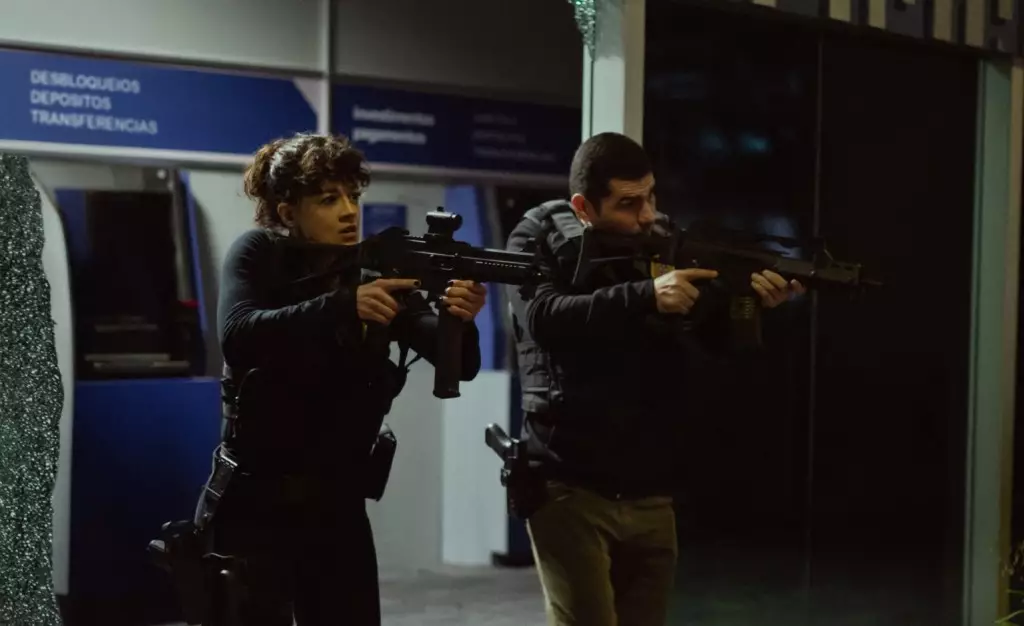In an industry often defined by formulas and clichés, Netflix’s new Brazilian action drama, ‘Criminal Code’, has emerged as a refreshing anomaly. Drawing inspiration from real-life events, the series has captivated audiences both locally and internationally, skyrocketing to the top of Netflix’s charts in 70 countries, including the United States and Canada. Its successful debut in late 2023 positioned it as the most-watched Brazilian series in that period and set the stage for a highly anticipated second season. ‘Criminal Code’ has not only captured viewer attention but has also ignited discussions surrounding Brazilian storytelling in the global media landscape.
Rooted in Reality: A Unique Narrative Approach
What sets ‘Criminal Code’ apart from other action dramas is its reliance on authenticity. Showrunner Heitor Dhalia explains the team’s commitment to respecting the intricacies of the criminal world, stating, “Crime series must respect the codes of the universe we portray.” This adherence to realism is not merely a stylistic choice but a foundational principle that undergirds the show’s narrative structure. By involving former criminals, police consultants, and even ex-bank robbers, Dhalia and his team immerse the audience in a narrative that feels genuine. The story is not a simplistic glorification of crime, but rather a complex portrayal of the socio-economic struggles that often lead individuals down a dark path.
A Multifaceted View of Crime
The series employs a kaleidoscope of perspectives, exemplifying how Dhalia aims to depict the moral ambiguities of its characters. By weaving the narratives of law enforcement and criminals alike, ‘Criminal Code’ offers its audience an intricate look at the forces that shape the lives of those within the Triple Frontier—a region marked by its notorious crime and lawlessness. “The strength and clash of perspectives make the series what it is,” states Dhalia, emphasizing the importance of complexity in storytelling. This approach not only heightens the stakes but creates a fertile ground for dramatic tension, allowing viewers to empathize with characters across the moral spectrum.
Visually Captivating and Culturally Rich
Visually, ‘Criminal Code’ is a treat, beautifully capturing the essence of Brazil’s landscapes, from the bustling streets of its cities to the quiet corners of rural life. The cinematography and art direction work hand-in-hand to establish a visual tone that is immersive and engaging. Understanding that visual storytelling complements narrative depth, the creative team endeavors to craft scenes that resonate emotionally with audiences, making the heart-pounding action sequences not just thrilling, but also meaningful.
Breaking Barriers in Brazilian Television
The series also represents a significant departure from traditional Brazilian television, which is often dominated by melodramatic narratives. With ‘Criminal Code’, viewers are served a different flavor of Brazilian storytelling—one that is raw, thrilling, and unapologetically honest. Dhalia’s vision extends beyond just one show; he is currently working on another Netflix project, ‘Os Donos do Jogo’, which delves into the world of Rio de Janeiro’s gambling mafia. Such projects exemplify an evolving landscape in Brazilian TV, heralding a new era that aims to put Brazilian narratives on the world stage.
Looking Beyond Entertainment
Though ‘Criminal Code’ is undoubtedly an action-packed drama, it serves a deeper purpose by inviting viewers to examine the roots of crime and the societal structures surrounding it. Through character development and gritty storytelling, the show prompts conversations about morality, resilience, and the socio-political intricacies in Brazil. This is a bold step towards transforming Brazilian television from mere entertainment into an engaging platform for social commentary.
In a world where storytelling wields the power to inspire change, ‘Criminal Code’ stands out as a an exceptional piece of art—a drama that is not only riveting but also reflective of the human experience in all its complexity.


Leave a Reply